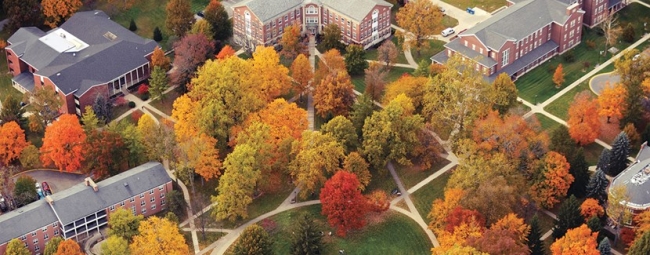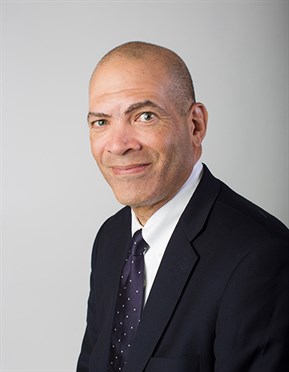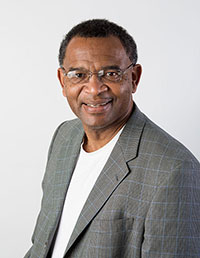You have /5 articles left.
Sign up for a free account or log in.

Earlham College
Earlham College enters August facing a conspicuous opening for its president, a stubborn hole in its budget, a set of nervous faculty members and a group of unsettled alumni.
It's a considerable set of issues for the small, private college in Richmond, Ind. The immediate issues are feeding into deeper questions about Earlham's identity.
Worries mount that the college has strayed too far from its liberal arts core. Suspicions run high that college leaders reached recent important decisions without regard for one of the key governance principles rooted in its Quaker identity: consensus.
In many ways, Earlham is not an average down-on-its-luck liberal arts college. It boasts a considerable endowment on paper, $438 million. It draws students from across the country, with just 22 percent of students coming from its home state of Indiana and another 23 percent from other states in the Midwest.
Yet Earlham is still a prime example of questions swirling around small liberal arts colleges poor and wealthy, regional and national. How can they attract tuition-paying students -- and parents -- without burning too much cash in a world growing more and more focused on careers? And how do leaders build consensus on time-sensitive spending and hiring decisions in a society where agreement between any two people is increasingly scarce?
“Reaching consensus is always a challenge, and reaching consensus is often a time-consuming process,” said Tom Hamm, recording clerk of the faculty at Earlham and a leading expert on Quakers in America. “It’s not clear we have a lot of time.”
The spate of soul-searching comes after several years of eroding financial indicators. Earlham has been using money from its endowment to plug a gap between the revenue it collects and larger sums it spends. At the same time, its net tuition revenue per student has been declining.
 Those trends came to a head starting June 6, when college leaders announced that they are seeking to slash Earlham’s expense budget for the 2019-20 academic year by $8 million, to $42 million. Then, on June 27, the college announced that its president of just one year, Alan Price, was resigning.
Those trends came to a head starting June 6, when college leaders announced that they are seeking to slash Earlham’s expense budget for the 2019-20 academic year by $8 million, to $42 million. Then, on June 27, the college announced that its president of just one year, Alan Price, was resigning.
Price’s resignation was effective July 31, but college leaders have not said exactly why he left. His departure came after “extensive discussion” in two meetings of the college’s Board of Trustees Executive Committee and a meeting of the full board, wrote David Stump, board chair, in a July 23 email sent to faculty.
“The board’s decision to accept Alan’s resignation would not have been made had there not been a strong view that it was in the best interest of the college,” Stump wrote. “After personally reviewing the situation in detail with Alan, including each specific issue raised in the Executive Committee discussions, a mutual agreement was reached that the best course to follow was for him to submit his resignation, which he did shortly afterward. Out of respect for Alan and my colleagues on the board, details of the discussions regarding his resignation are considered confidential and will not be shared.”
Price did not resign because of his “moral character” or reasons calling “into question his love for and loyalty to Earlham,” Stump wrote. The confidentiality of the issue made it hard for Stump to respond to “misinformation and speculation which apparently has been circulating,” he added.
The board’s Executive Committee is made up of 10 alumni trustees and includes Board of Trustees officers and chairs of all board standing committees. Bylaws allow it to act for the full board under certain circumstances, Stump wrote. The Executive Committee presented its consensus recommendation to the full board, which accepted the recommendation despite “considerable regret that the circumstances had resulted in this outcome,” Stump wrote.
Price was a former Earlham trustee who was noted as the first person of color to become the college’s president. Previously, he had been associate director of management for the Peace Corps and the acting chief of staff for the Federal Mediation and Conciliation Service.
Earlham did not release information on the length of Price’s contract or about his compensation. Price did not have an academic background and did not leave the presidency with a tenured faculty position, according to a college spokesman.
The president’s departure and new call for budget cuts caught the attention of a group of alumni. They are concerned about the way Price’s resignation came about and want more financial transparency. They express deep unease about a 2015 Earlham strategic plan and the way it was approved, fear future faculty cuts and worry about what they see as top-down decision making replacing shared governance on campus. In addition, they are unhappy with what they see as an erosion of Earlham’s traditional culture.
The 2015 strategic plan was built on pillars that essentially stand against many of the things Earlham has been in the past, said Catherine Kemp, who graduated from Earlham in 1987, one of several alumni who started a Facebook group for those concerned about Earlham and who co-authored an online petition demanding Price’s reinstatement.
“I’m not saying that as a nostalgic alum from the ’80s,” Kemp said. “I’m saying it as someone who can look at language.”
The 2015 plan in question has six pillars: strengthen the traditional academic core; enhance Earlham’s appeal through enrollment and marketing; energize community life; extend opportunities beyond campus; embody fiscal and operational discipline; and launch a program known as the Earlham Program for an Integrated Curriculum, or EPIC.
Some elements of EPIC appear to mirror the signature programs or experiences that other liberal arts colleges put in place in attempts to stand out from the field. One of its components, called EPIC Advantage, offers funded internships, research experiences or projects for every student before graduation. It launched at the beginning of the 2017-18 academic year, funded by a $7.5 million gift from a pair of 1974 alumni, Alan and Peg Kral Scantland. Alan Scantland is an Earlham trustee. Critics worry EPIC diverts money and focus away from the college's traditional academic strengths in the classroom.
Concerned alumni also point out that the college’s curriculum has been redone several times in recent years.
“When we were going through the course of study as students in the 1980s with the required humanities sequence, it was very much a liberal arts program,” said Loren Lybarger, who graduated from Earlham in 1986. “That seems to be completely gone.”
Recent revisions to general education requirements were a move toward more student choice, according to Hamm, the recording clerk of the faculty. He described the requirements as still being founded on a strong liberal arts vision.
No matter what courses it requires, the college will need to pay its bills. That financial side of operations is under intense scrutiny.
A committee already produced a plan for cutting Earlham’s expense budget by $2 million in 2018-19, and the college’s board approved the plan in March. But even after those $2 million in cuts, trustees learned in June that Earlham faced a $12.8 million deficit for 2018-19, up substantially from earlier projections. The deficit grew in large part because of lower than expected net tuition revenue.
So a new committee of students, faculty, administrators and staff has been tasked with finding additional cuts and ways to raise more revenue. Difficult choices are ahead, according to a July 24 newsletter circulated to campus and alumni.
“Like most schools, a significant portion of our operating budget goes to salaries and benefits for our faculty, staff and administrators,” it said. “Administrative operating budgets already have been cut several times in recent years, so we have limited options when it comes to reducing expenses. The people who work at Earlham are the lifeblood of the institution. They are the ones who make possible the amazing educational opportunities we provide. Saying goodbye to members of our community who have served our students well is painful to contemplate.”
Trustees’ target 2019-20 expense budget of $42 million is less than the college spent a decade ago. Earlham’s operating expense budget was $47.6 million for the year ending in June 2008, according to financial statements. It spent $61.4 million in 2017, the last year for which statements have been posted.
During that time, the college raised tuition rates but increased discounts given to students at a greater rate. Earlham collected less in tuition and fees in 2017 than it did in 2008 -- $14.1 million versus $21.3 million.
As a result, the college came to rely more and more on its endowment for funding. It’s also used the endowment to fund efforts to boost revenue. But the endowment is not a deep well that can be tapped indefinitely. The $438 million aggregate is divided into different funds. About $49 million is designated for the Earlham School of Religion, a graduate theological school. Only about $150 million is unrestricted.
“Net tuition revenue per student has fallen, which has necessitated larger draws on the endowment,” the July 24 newsletter said. “We are not able to continue this approach indefinitely.”
In the 2013 fiscal year, Earlham collected $15,100 in net tuition revenue per student. It collected just $12,000 per student in 2018. The college's tuition and fees totaled $40,020 per student in 2013 and $45,750 in 2018, not counting room and board. Over that five-year period, its cumulative net cash outflows exceed inflows by more than $47 million.
The college’s undergraduate enrollment has changed little over the last seven years. In the fall of 2011, its head count totaled 1,063. That dipped to 988 in 2015 but climbed back to 1,060 in 2017.
Leaders fear demographic headwinds will make it hard to enroll more students in the future.
 “We have to be able to offer the Earlham experience in a financially stable way for years to come,” said Avis Stewart, who was named the college’s interim president. “It’s a substantial lift. We understand that this will be a process, and it is a process where the teaching faculty have to be involved.”
“We have to be able to offer the Earlham experience in a financially stable way for years to come,” said Avis Stewart, who was named the college’s interim president. “It’s a substantial lift. We understand that this will be a process, and it is a process where the teaching faculty have to be involved.”
Stewart previously held several roles at Earlham, including vice president for community relations, vice president for institutional advancement and community relations, and, most recently, senior adviser to the president and major gift officer. He is not seeking the college’s presidency on a permanent basis, he said.
He pointed to the financial crisis of 2008 as a critical moment for the college’s finances. The landscape started changing for higher education, and it began to change for Earlham then, he said.
Earlham pumped millions into science and technology facilities in recent years. It also added 13 new positions before the 2016-17 academic year in biology, business, chemistry, computer science, environmental studies, international studies, psychology and support for three interdisciplinary centers in social justice, global health and entrepreneurship and innovation. Ten of the positions were tenure-track teaching faculty, and three director positions related to the centers were hired from existing members of the teaching faculty.
The spending was necessary, Stewart said. Facilities needed to be renovated, and students are interested in business, science and technology.
The college will continue to exist in the future, Stewart asserted. But he did not disagree with the idea that there is debate over that future.
“A lot of this is a fight for where we’re going with the humanities,” Stewart said. “Everybody is asking about that. How can we make sure we can preserve the humanities as we move through the whole process?”
Longtime faculty members point out that science is nothing new for Earlham. Biology has been its most popular major since the middle of the 20th century, said Hamm, who in addition to being recording clerk of the faculty and an expert on Quakers in America is also a professor of history and director of special collections at Earlham.
Even if the question of curriculum could be settled, the one of leadership and Alan Price’s unexpected resignation would remain.
“I think a lot of people are in the situation in which I find myself, in which my affection and esteem for Alan is pitted against the respect I have for the people I know on the Board of Trustees,” Hamm said.
Earlham had another one-year presidency about 35 years ago, Hamm said. But it was clear then that things weren’t going well. In contrast, Price’s resignation caught the campus off guard.
“There is nothing quite like it in Earlham’s history,” Hamm said. “I think most people on campus were really stunned by these developments. And you know, to be searching for a new president at the same time that we are facing such significant budgetary challenges, there is just no parallel to that in the college’s 170-year history.”
On the financial side, it is not yet clear how the college’s budget will be brought into line. The committee formed to address the issue will examine administrative cuts and streamlining the academic portfolio, said one of the professors convening it, James Logan, who is associate academic dean, professor of religion and director of African and African American studies.
Leaders had hoped that past investments, like those in facilities and new faculty positions, would help Earlham gain net tuition revenue. Instead, the college seems to have been keeping up with the competition, not breaking away from it.
“There was some hope we were getting ahead, and it has not panned out that way,” Logan said.
Going forward, Logan hopes all parties involved can unite around Earlham’s shared principles.
“We’re a college that is tied to the Religious Society of Friends,” Logan said. “We are Quakers, and we have a certain mission. We try to work within the virtues of integrity, peace and justice, community, and simplicity -- and we try to live out those practices. The true test of a character of a place is how it does when things are not going well.”








